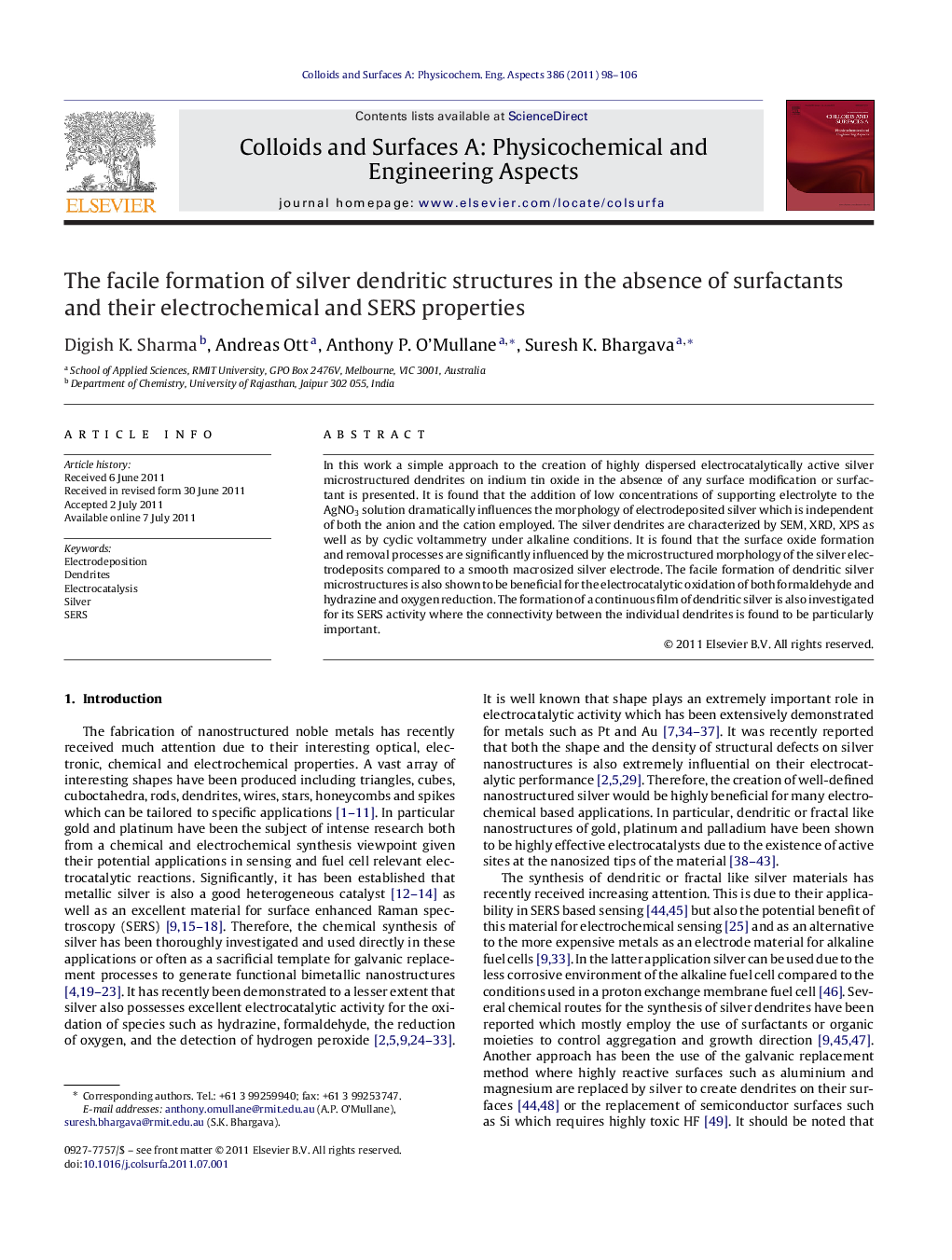| Article ID | Journal | Published Year | Pages | File Type |
|---|---|---|---|---|
| 594576 | Colloids and Surfaces A: Physicochemical and Engineering Aspects | 2011 | 9 Pages |
In this work a simple approach to the creation of highly dispersed electrocatalytically active silver microstructured dendrites on indium tin oxide in the absence of any surface modification or surfactant is presented. It is found that the addition of low concentrations of supporting electrolyte to the AgNO3 solution dramatically influences the morphology of electrodeposited silver which is independent of both the anion and the cation employed. The silver dendrites are characterized by SEM, XRD, XPS as well as by cyclic voltammetry under alkaline conditions. It is found that the surface oxide formation and removal processes are significantly influenced by the microstructured morphology of the silver electrodeposits compared to a smooth macrosized silver electrode. The facile formation of dendritic silver microstructures is also shown to be beneficial for the electrocatalytic oxidation of both formaldehyde and hydrazine and oxygen reduction. The formation of a continuous film of dendritic silver is also investigated for its SERS activity where the connectivity between the individual dendrites is found to be particularly important.
Graphical abstractFigure optionsDownload full-size imageDownload as PowerPoint slideHighlights► Electrochemical formation of Ag dendrites is controlled by the supporting electrolyte. ► Ag dendrites are good electrocatalysts for hydrazine and formaldehyde oxidation and oxygen reduction. ► Continuous films of dendritic nanostructures demonstrate good SERS activity.
